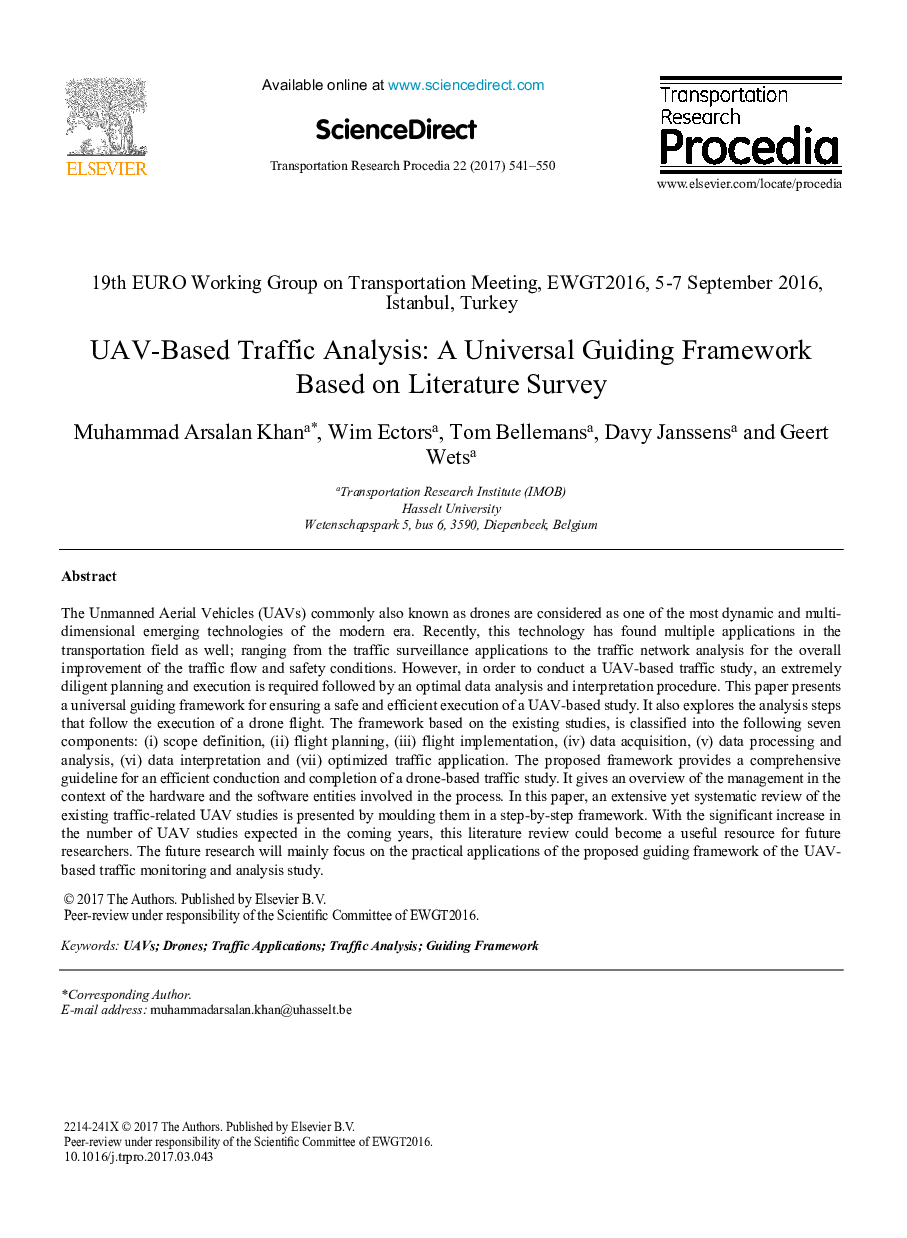| Article ID | Journal | Published Year | Pages | File Type |
|---|---|---|---|---|
| 5125407 | Transportation Research Procedia | 2017 | 10 Pages |
:The Unmanned Aerial Vehicles (UAVs) commonly also known as drones are considered as one of the most dynamic and multi-dimensional emerging technologies of the modern era. Recently, this technology has found multiple applications in the transportation field as well; ranging from the traffic surveillance applications to the traffic network analysis for the overall improvement of the traffic flow and safety conditions. However, in order to conduct a UAV-based traffic study, an extremely diligent planning and execution is required followed by an optimal data analysis and interpretation procedure. This paper presents a universal guiding framework for ensuring a safe and efficient execution of a UAV-based study. It also explores the analysis steps that follow the execution of a drone flight. The framework based on the existing studies, is classified into the following seven components: (i) scope definition, (ii) flight planning, (iii) flight implementation, (iv) data acquisition, (v) data processing and analysis, (vi) data interpretation and (vii) optimized traffic application. The proposed framework provides a comprehensive guideline for an efficient conduction and completion of a drone-based traffic study. It gives an overview of the management in the context of the hardware and the software entities involved in the process. In this paper, an extensive yet systematic review of the existing traffic-related UAV studies is presented by moulding them in a step-by-step framework. With the significant increase in the number of UAV studies expected in the coming years, this literature review could become a useful resource for future researchers. The future research will mainly focus on the practical applications of the proposed guiding framework of the UAV-based traffic monitoring and analysis study.
